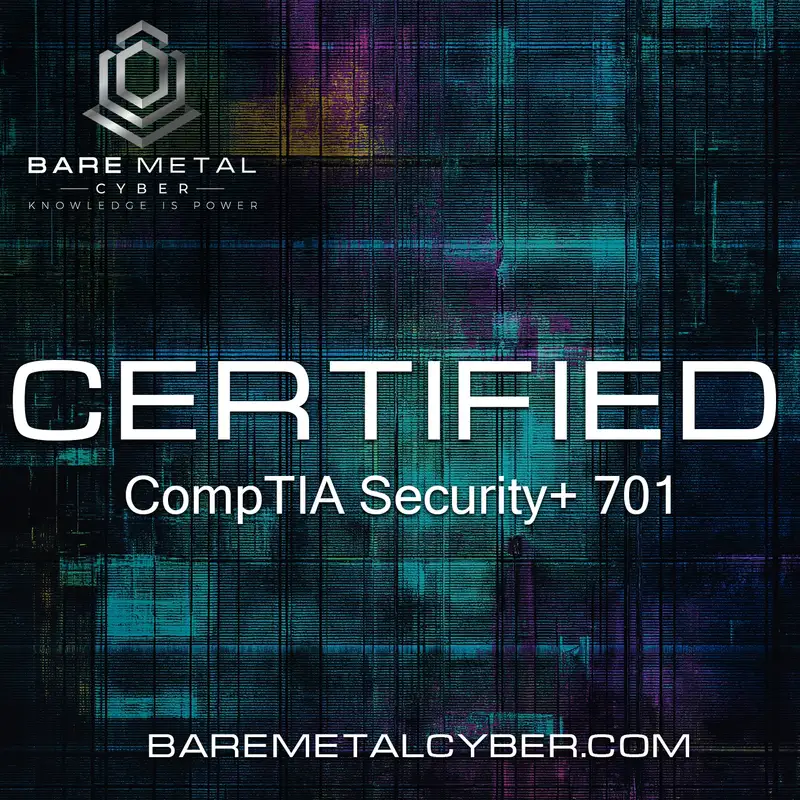Application Allow Lists and Isolation (Domain 2)
In this episode, we are focusing on two powerful techniques for controlling the software environment and containing breaches: application allow lists and system isolation. These methods are proactive and preventive. Rather than reacting after a threat has spread, they work by blocking unauthorized activity before it starts or keeping it contained if it does. Let’s explore how these strategies work and how they can dramatically reduce the impact of cyberattacks.
Let’s begin with application allow lists. Also known as whitelisting, this approach defines which applications and scripts are explicitly permitted to run on a system. Everything else—whether it’s malware, an unauthorized installer, or an unapproved tool—is automatically blocked. This is the opposite of traditional antivirus, which tries to identify and stop known bad applications. Instead, an allow list starts from a position of denial, only making exceptions for trusted software.
The benefit of this approach is clear. If an attacker tries to run a malicious executable or script, and that file is not on the allow list, it simply won’t launch. Even if the attacker finds a way to get the file onto the system, execution is prevented. This is especially powerful in environments where change is minimal—such as industrial control systems, point-of-sale terminals, or corporate workstations with a fixed set of tools.
There are several ways to implement allow lists. Administrators may use cryptographic hashes to identify allowed binaries, file paths for trusted directories, or digital certificates to permit software from approved vendors. Centralized management tools can distribute allow list policies across endpoints and monitor for violations.
Case studies show the success of allow listing in stopping ransomware outbreaks. In one incident, a company using a traditional antivirus product was hit by a ransomware strain that evaded signature detection. The malware encrypted data on hundreds of machines before it was discovered. A similar company in the same industry, using an application allow list, blocked the executable before it ever launched. The difference in outcome was dramatic—one required weeks of recovery, the other experienced no disruption at all.
Now let’s turn to isolation. Isolation techniques are used to contain threats and limit the ability of an attacker or piece of malware to move laterally within an environment. The basic idea is to put systems, applications, or processes in containers—whether logical or physical—so that if something goes wrong, the damage is contained.
One common isolation technique is sandboxing. A sandbox is a controlled environment where untrusted code or files can be executed safely. Sandboxes are often used to analyze email attachments or test applications before deployment. If the file turns out to be malicious, it only affects the sandbox—not the production system.
Virtual isolation refers to separating workloads using virtual machines or containers. Each virtual instance runs independently, with its own operating environment and limited access to other systems. If one virtual machine is compromised, the others remain unaffected—especially when network segmentation and proper access controls are in place.
Physical isolation takes this concept even further. Air-gapped systems—those with no connection to external networks—are an extreme form of isolation often used in high-security environments like military facilities, nuclear control systems, or proprietary research labs. Even if malware were to reach one of these systems, its inability to communicate with the outside world severely limits its impact.
Real-world examples show how effective isolation can be. In a banking environment, a malicious email attachment reached a user’s inbox and was executed. However, because the organization routed email attachments to a sandbox for testing before allowing access, the malware was contained and flagged before it could affect the user’s system. In another case, virtual desktops were used in a high-risk department. When one user clicked on a malicious link, the infection was limited to that virtual instance, which was quickly wiped and replaced.
Implementing isolation requires planning. Sandboxes must be designed to mimic real environments so that malicious behavior is triggered and detected. Virtual environments need to be securely managed, with updates, snapshots, and policies in place to prevent escape or misconfiguration. Physical isolation, while effective, is expensive and complex—but in some environments, it remains the gold standard.
As you prepare for the Security Plus exam, remember that application allow lists stop unauthorized execution, while isolation strategies limit the scope of compromise. You may be given a scenario where malware is blocked by an allow list, or where a sandbox is used to analyze suspicious behavior. Be ready to describe how these techniques work, why they are effective, and what tools or policies support them in real-world environments.

